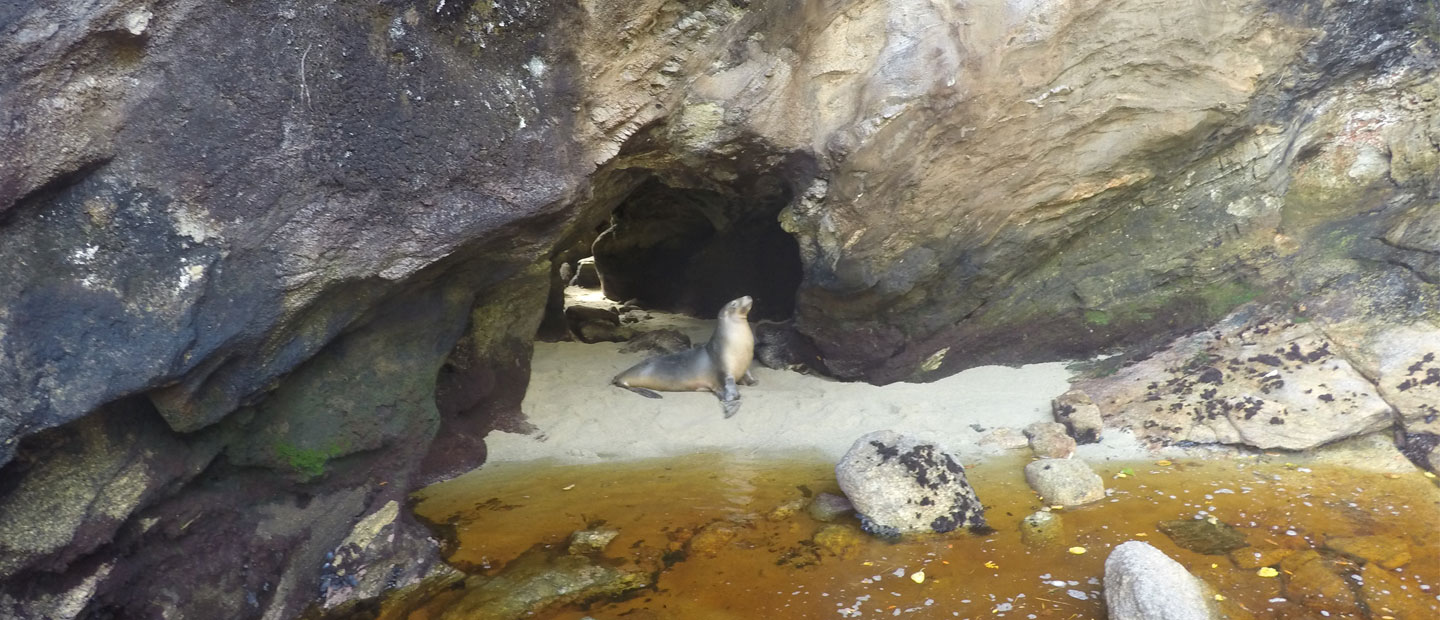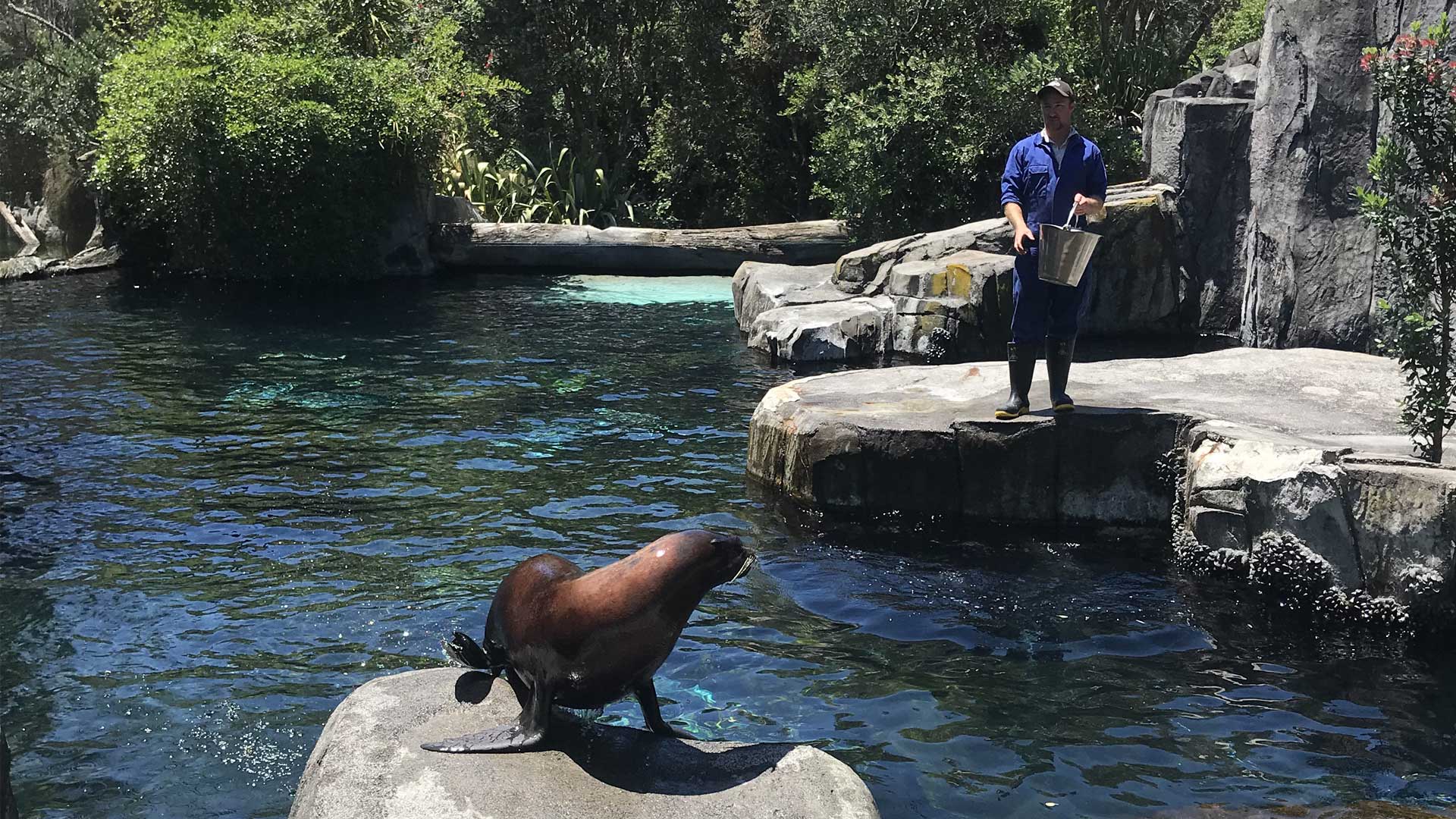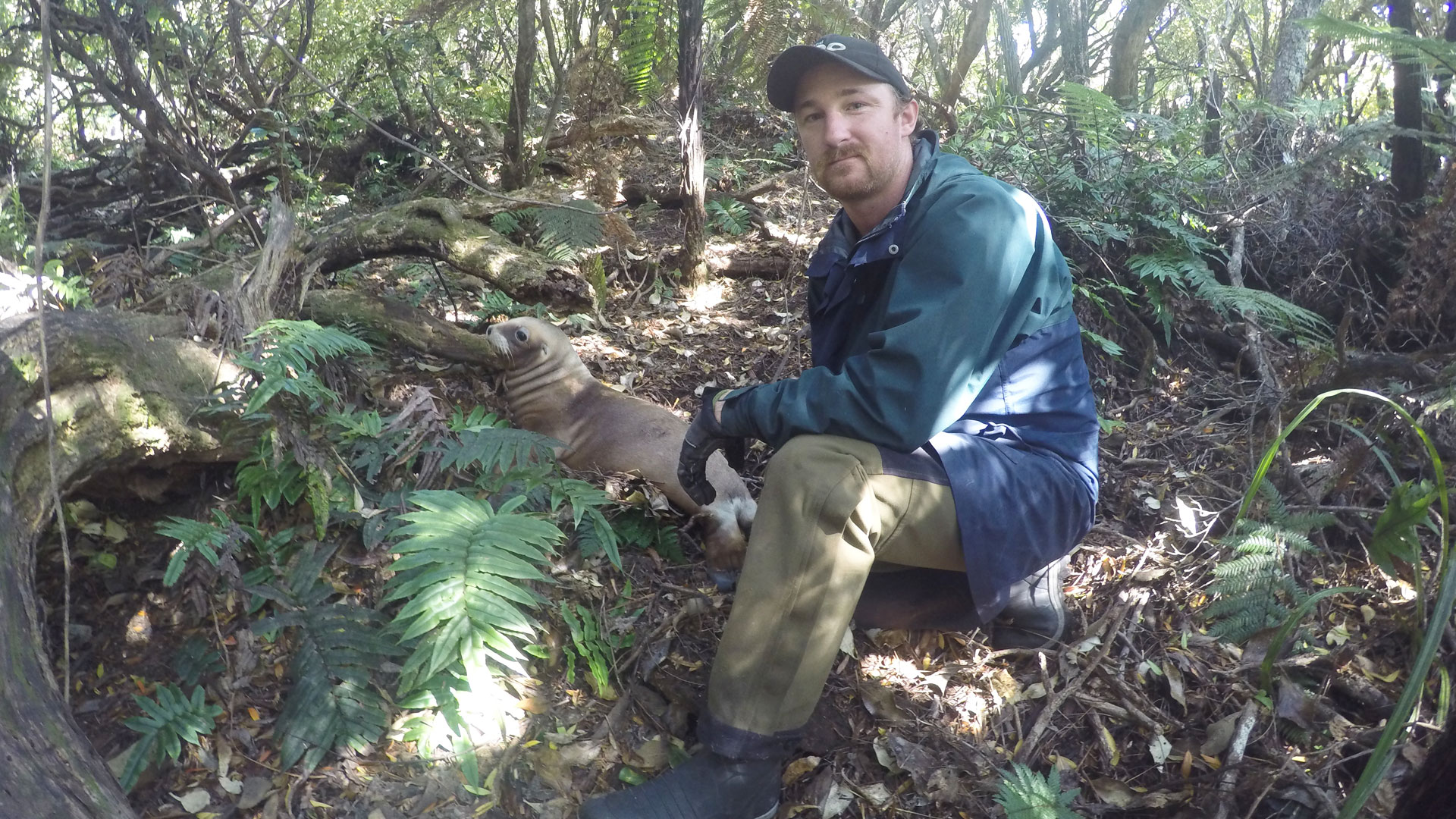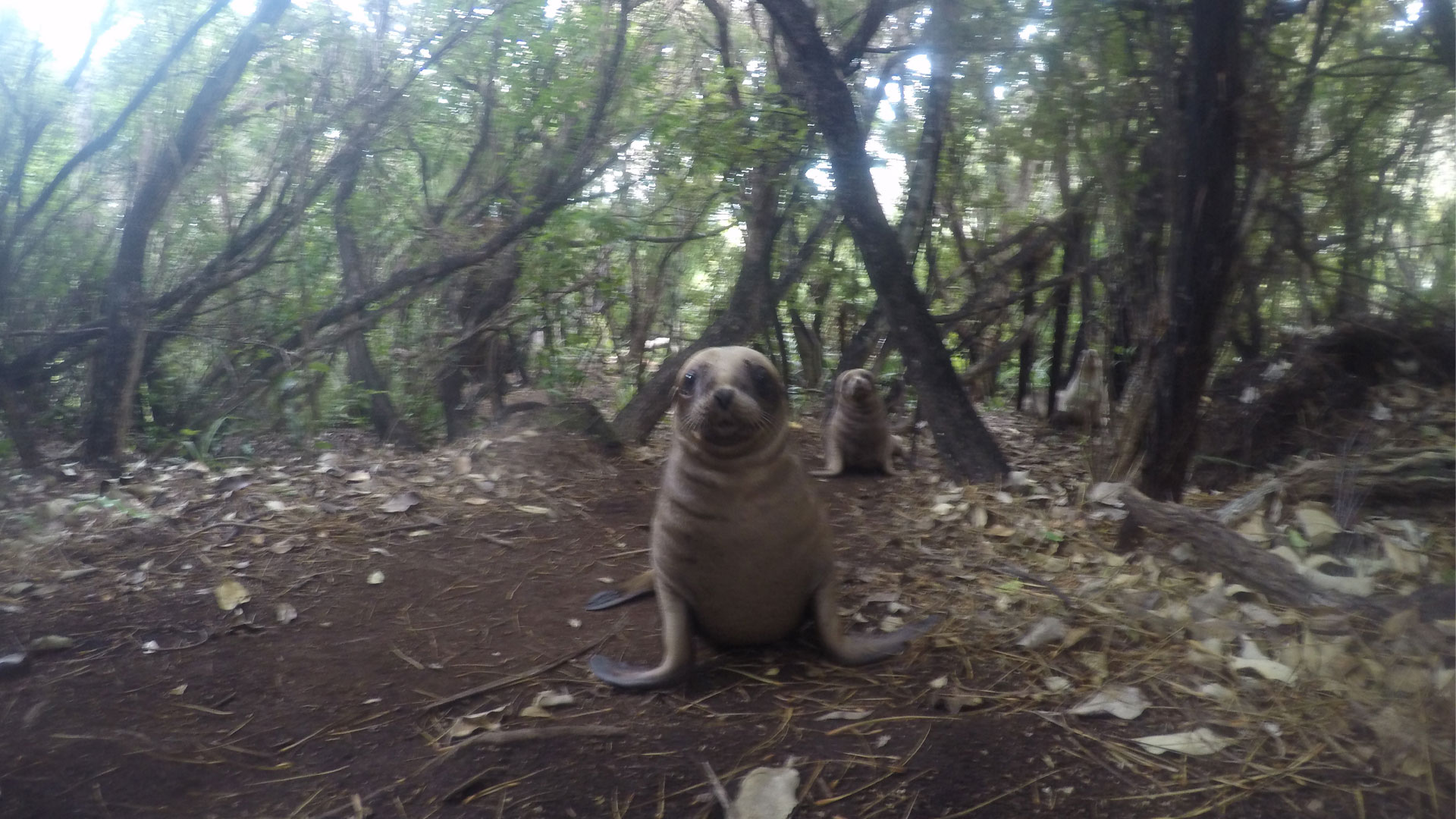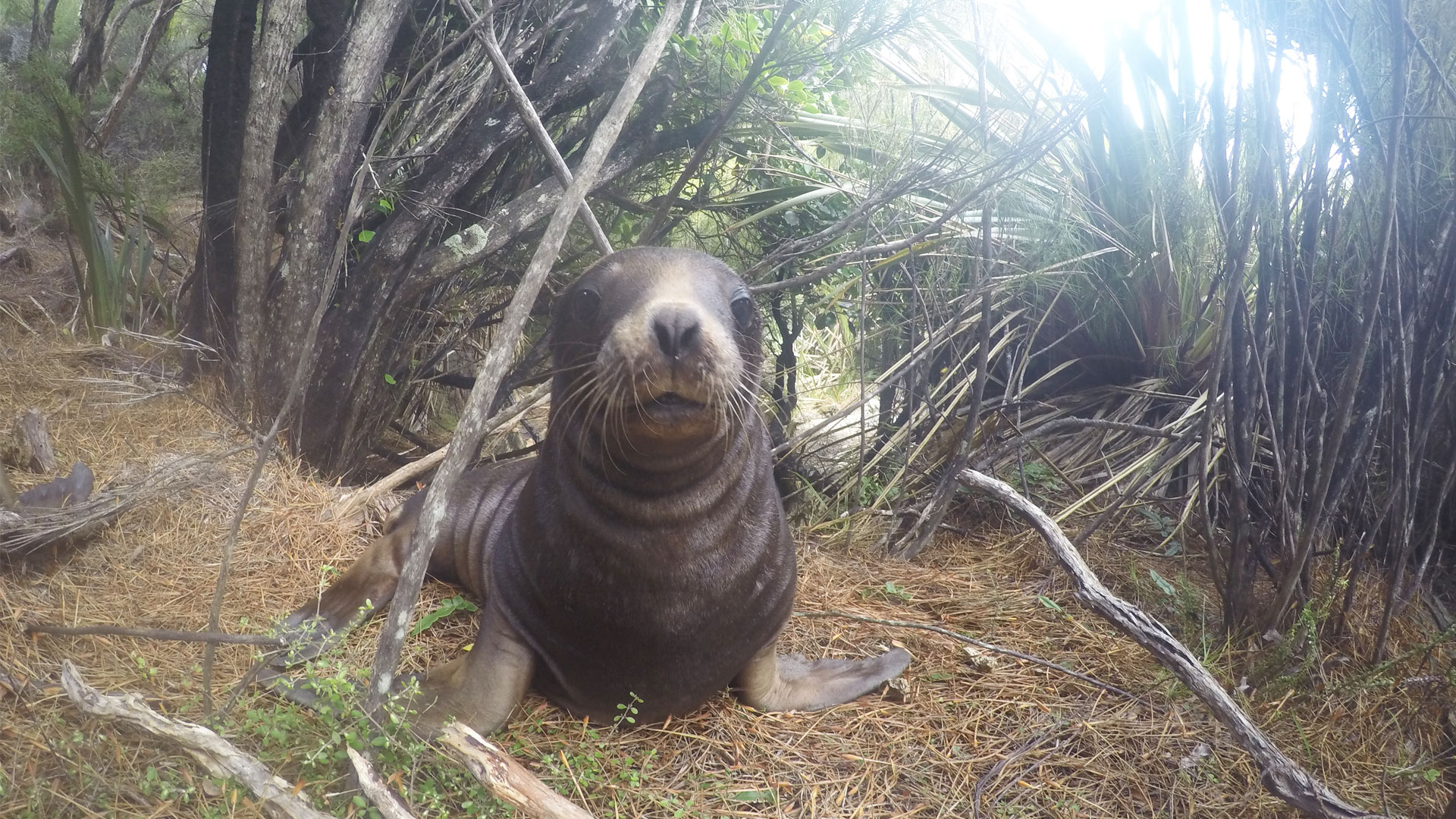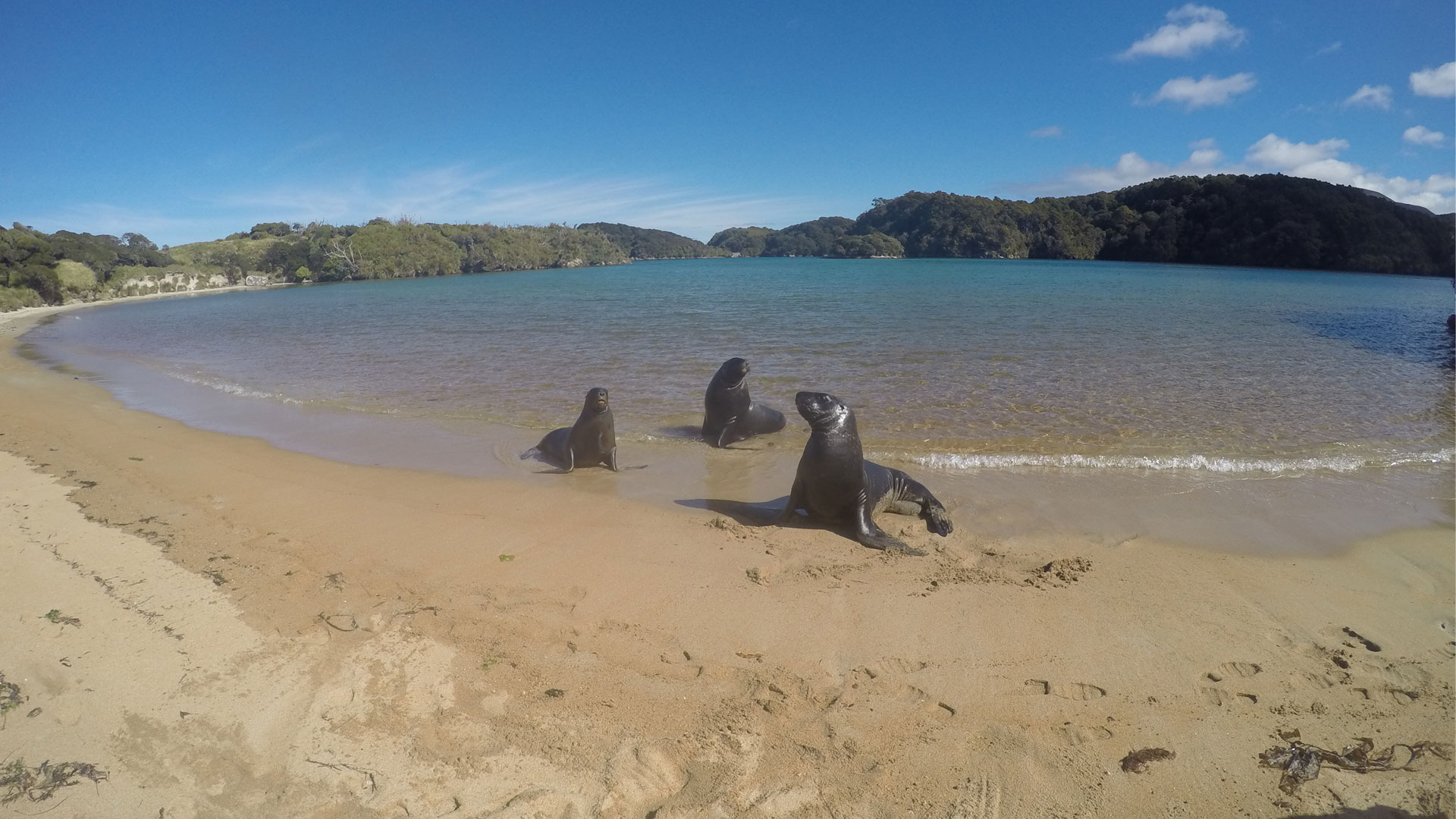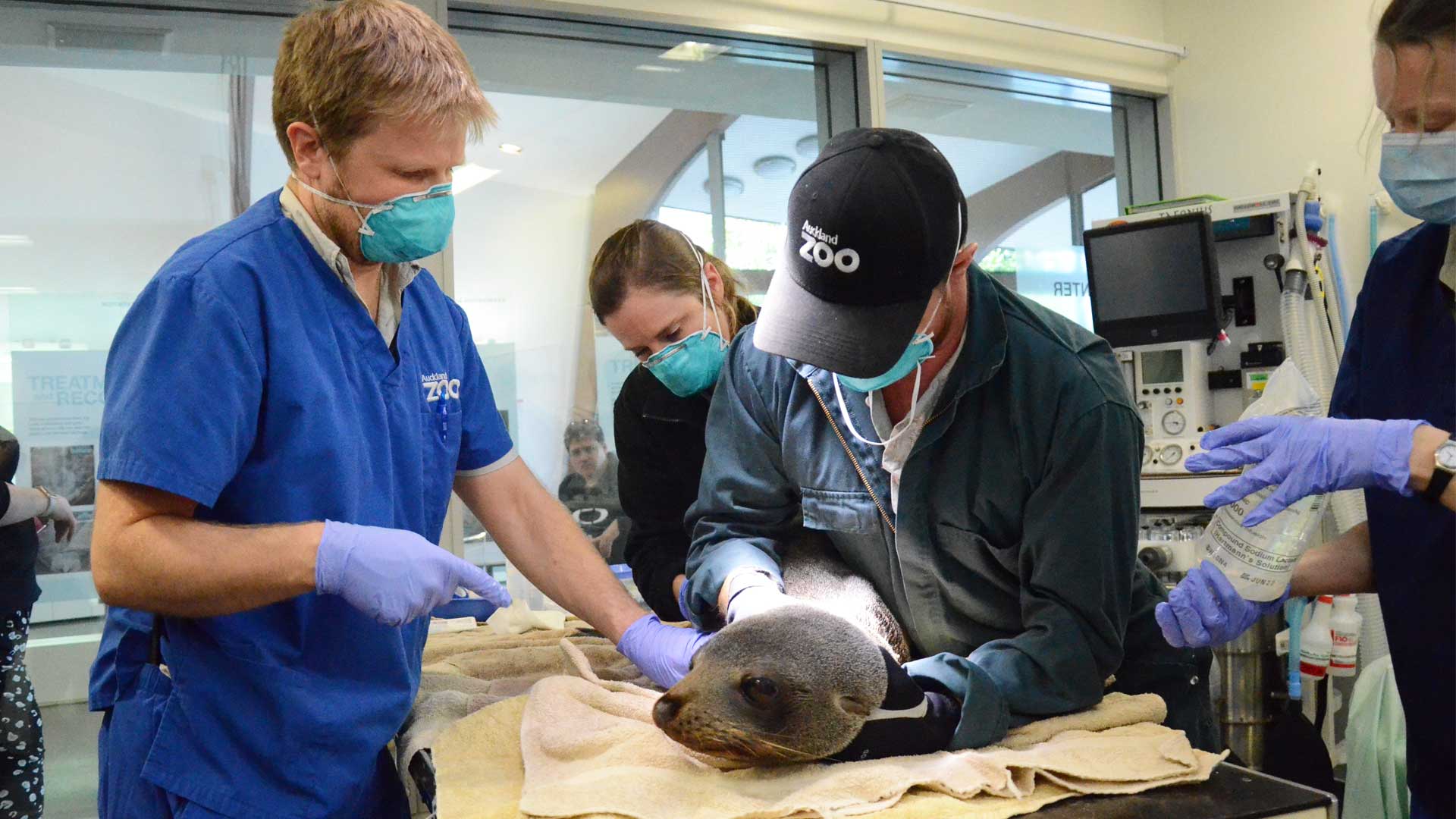Even as a toddler, Odin said he wanted to be a zookeeper. Born in Australia, Odin and his family relocated to a farm in Waiuku when he was just three years old, igniting his connections with wildlife. Befriending everything from toads and snakes, to cows, insects, and even ferrets in the hayshed – he can’t recall a time when he wasn’t fascinated by animals, making friends with the largest to the smallest of creatures. And now, after many years of commitment to conservation and skill-building in his role at Auckland Zoo, Odin gets to channel his learnings into vital conservation efforts for the worlds most endangered sea lion (rāpoka) mainly found in only the southern-most parts of New Zealand.
They do it for the love – conservation work is rarely glamourous. It’s physical, and at times dirty. It’s long sleepless nights, tiring days, and being prepared to come back with a few battle wounds after losing fights with dense scrub and mixed terrain. But with that also comes the thrills, the unforgettable moments, a love for all animals, and a sense of purpose. These are traits common of zookeepers – a group of people that care deeply about the quality of life of all animals. It’s this passion that makes them strive to be kaitiaki, or guardians, of wildlife so that future generations can make those same connections they had the privilege of making.
Odin didn’t know exactly what it meant to be a zookeeper, so he began his journey with a few weeks of work experience at Auckland Zoo around 12 years ago. He was lucky to get experience working with a range of animals, but it became quickly apparent his heart was invested in elephants and seals. It was the incredible connection he could see the team had built with them, all based on trust, respect, and a deep bond. Unsure of how to turn this passion into a career, but armed with the knowledge that this was how he wanted to spend his working life, he asked the team’s advice.
“I was this bogan with long blond hair, stubbies, and I’m sure everyone would have been thinking, ‘Who is this dude from Waiuku?’ They told me to apply for the animal course at Unitec, and I don’t think they really thought I was going to follow through, but I knew what I wanted, and I did,” Odin said.
Odin, Elephants and Seals keeper, Auckland ZooI really enjoy it, just getting the opportunity to do something that is directly helping the most endangered sea lion in the world. Working with wildlife, when you know you’re doing something of value for a species, it’s rewarding, valuable, and you feel a great sense of achievement.
After getting a last-second placement in the Unitec course, Odin began volunteering at Franklin Zoo (regular voluntary zoo work was a requirement of the course), and after a chance encounter with Andrew again – team leader of elephants and seals at Auckland Zoo – Odin’s enthusiasm and work ethic still stood out months later. Andrew offered Odin casual work at Auckland Zoo, which then eventuated into a full-time job. That was 10 years ago, and when it comes to his dream job, Odin is still living it.
Around five years ago, Odin began working with Auckland Zoo’s rescued sea lions and seals. Quality of life is always top priority for our zoo whānau, so it’s important to have a relationship with the animals where the team is able to take bloods, or calmly restrain them for health checks. It’s always about doing this safely, but as quickly as possible, and keeping it a stress-free situation for the animals and staff, and this can only come with time and experience working with them.
“Seals taught me a lot, just working around them, learning how to move around them, and watching their behaviour,” Odin said.
It’s these skills which enable Odin to contribute to helping wild populations, in a variety of situations. Years ago, in a Papakura McDonalds car park, an extremely large fur seal – over 100 kgs – had made himself at home. Sadly, this situation is becoming more frequent due to urban sprawl, leaving less and less habitat for our precious taonga. So in this carpark, Odin and head vet James managed to carefully move around this big fella, get him into a crate, and back out to the ocean. Last year Auckland Zoo was contacted by our partners at the Department of Conservation (DOC) when a fur seal pup was found entangled in fishing twine at Piha Beach. Odin’s skills came in to play when he journeyed out to Piha to collect the injured pup, and brought him to our Vet Hospital for assessment.
“Fur seals are doing really well, their numbers are growing and we’re going to see pups in some unfamiliar areas – train tracks, someone’s back lawn, and unfortunately we expect more and more incidents like this. It’s about being prepared and making sure the public know the best thing they can do is keep their distance and alert DOC,” Odin said.
The skills Odin has learnt at Auckland Zoo are also able to be passed on to other conservationists wanting to play their part. Odin has taken part in workshops where his skills and knowledge are passed on to DOC staff around Auckland, who don’t have as much handling experience but need to know how to work with seals, crate them, what their body language should resemble, and how to act around them to keep their stress at a minimum.
He’s not only able to help wildlife in distress, but also contribute directly to stopping their extinction. Odin is part of a talented team of conservationists, lead by DOC, that visit Stewart Island every year to tag rāpoka – the most endangered sea lion pups in the world. Each sea lion born on Stewart Island gets a specific and unique tag number, so if it shows up on the mainland or on another island, it can be traced back to originating from Stewart Island. Recognising where sea lions come from and end up is vital so we can better protect those areas against threats, and do things to encourage their return to the mainland. This data also can show us gender ratios which can give us insight into what the next breeding season may look like, and help us understand if colonies are establishing and growing – you can’t stop a population declining in numbers without being aware of it in the first place. Led by Odin, Auckland Zoo is looking into other ways we can directly help sea lions in the wild.
“I really enjoy it, just getting the opportunity to do something that is directly helping the most endangered sea lion in the world. Working with wildlife, when you know you’re doing something of value for a species, it’s rewarding, valuable, and you feel a great sense of achievement.”
Odin is the primary carer for our rescued fur seal Orua, and compares these amazing animals to dogs, except they can dive deep and hold their breath under water. They are incredibly smart, love to learn new things, and will do anything for some fish!
“I’m always thinking about what I can teach him next – thinking about new behaviours, and things they can learn that not only they will enjoy, but to ensure they are active, moving well, and as they age checking them for any signs of change – behaviourally and physically. They love to be mentally stimulated, so that’s the process driving to work in the morning, wondering how to make their day as enjoyable as possible.”


